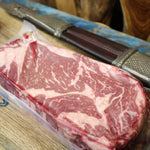
Chapter 10: Sustainable Beef and Culinary Fusion: A Modern Blend
A Shifting Paradigm: Beef in the 21st Century
As we stride into the 21st century, the narrative around beef undergoes a profound transformation. No longer confined to the sizzling grills of fast-food joints, beef steps into a new era, where ethical considerations, sustainability, and culinary fusion become integral to its story.
Sustainability: The Buzzword in Beef
The early 2000s witness a growing awareness of environmental impact and ethical considerations in food consumption. Beef, often criticized for its resource-intensive production, finds itself at the forefront of discussions about sustainability. This marks the beginning of a new era where consumers and producers seek to balance their love for beef with a commitment to a healthier planet.
In 2005, the Global Roundtable for Sustainable Beef is formed—a collaborative effort by stakeholders to address environmental, social, and economic challenges in beef production. Throughout the 2010s, the rise of grass-fed and pasture-raised beef gains momentum, aligning with consumer preferences for more sustainable and humane farming practices.
Culinary Fusion Redux: Beyond Borders, Beyond Traditions
As the world becomes more interconnected, culinary fusion takes on a new dimension. It's not just about blending flavors; it's about creating a cultural symphony on the plate. Beef, with its rich history and diverse cuts, becomes a canvas for chefs to paint global narratives.
In 2012, Korean-Mexican fusion gains popularity with the introduction of Bulgogi Tacos al Pastor, showcasing the continued evolution of global fusion in beef-based dishes. By 2015, the "Phorrito" emerges—a fusion of Vietnamese pho and Mexican burrito, featuring beefy pho broth-infused beef wrapped in a burrito. This exemplifies the ongoing creativity in melding diverse culinary traditions.
With an increasing focus on health and ethical choices, beef undergoes a renaissance in culinary circles. Lean cuts continue to find favor, offering a lighter alternative to traditional cuts while preserving the rich beefy flavor.
In 2018, the culinary scene is shaken by the Wagyu Beef Revolution—a resurgence of appreciation for this marbled delicacy, highlighting the craftsmanship involved in producing this premium beef. As we enter the 2020s, the demand for heritage breed beef, celebrated for its unique flavor profiles and traditional breeding practices, gains momentum.
The Future Plate: A Balanced Blend of Tradition and Innovation
As we navigate the complexities of the modern culinary landscape, sustainable beef and culinary fusion emerge as guiding principles. The journey from the sizzling grills of fast-food joints to the conscientious choices of the modern diner reflects not just a change in appetite but a shift in values. Beef, with its rich history and adaptability, continues to play a dynamic role in the ever-evolving world of food. From the humble beginnings on primordial pastures to the global fusion of flavors, the story of beef is one of resilience, adaptation, and a continued love affair with this timeless meat.














